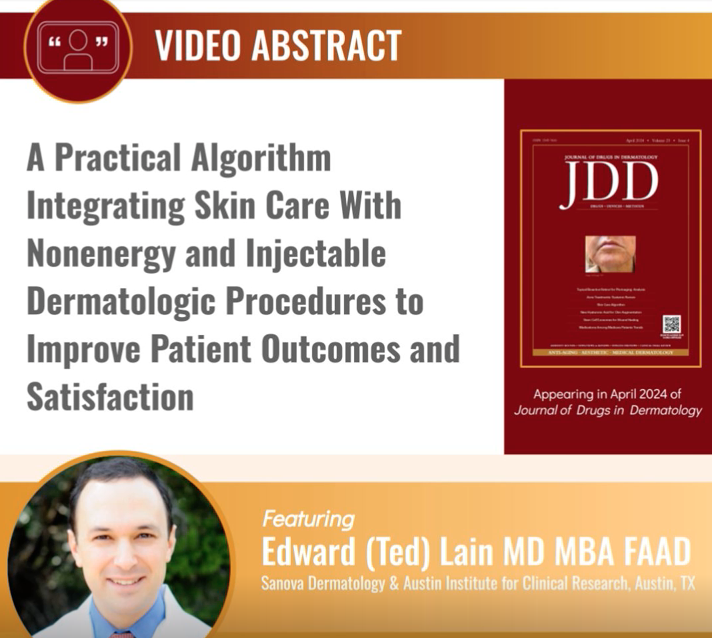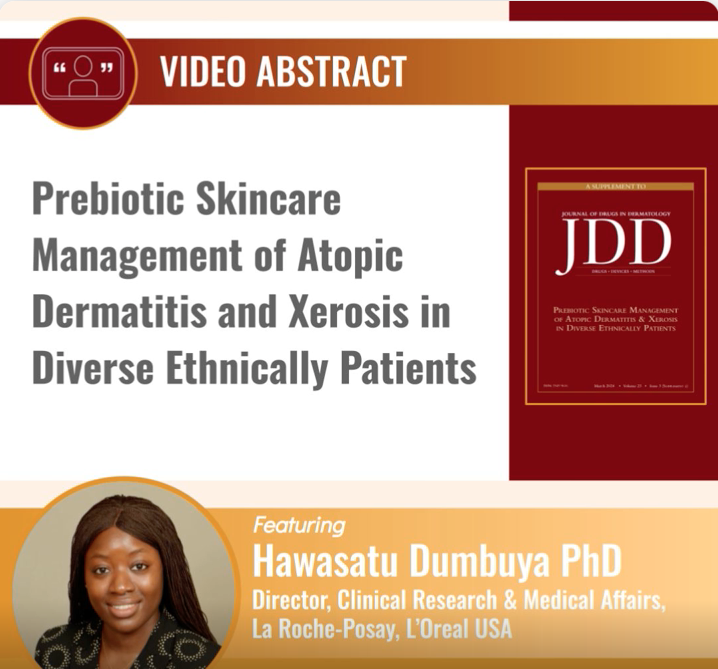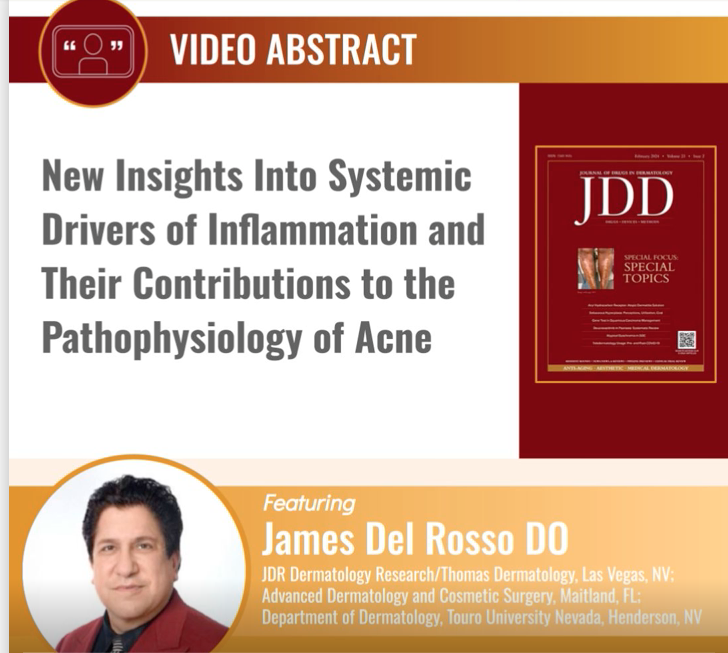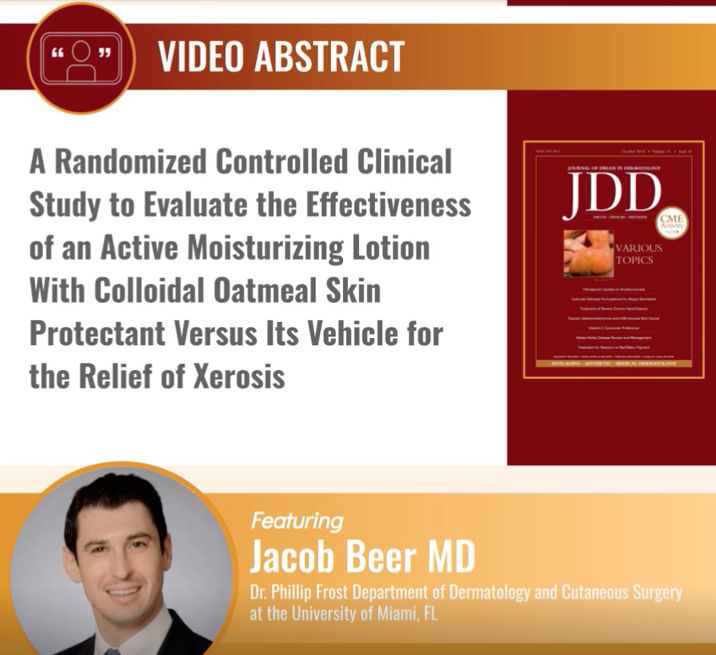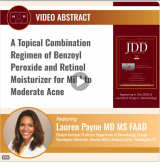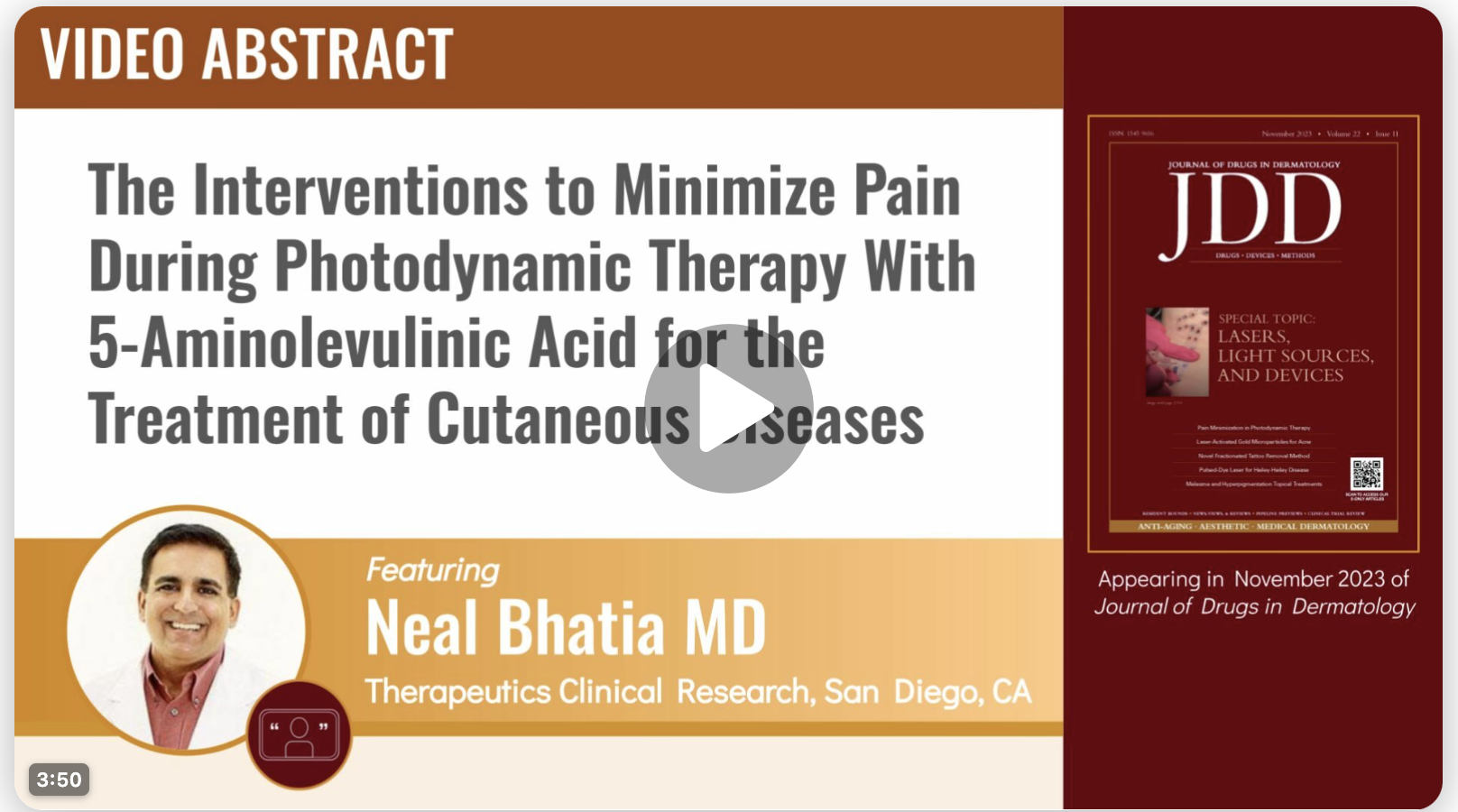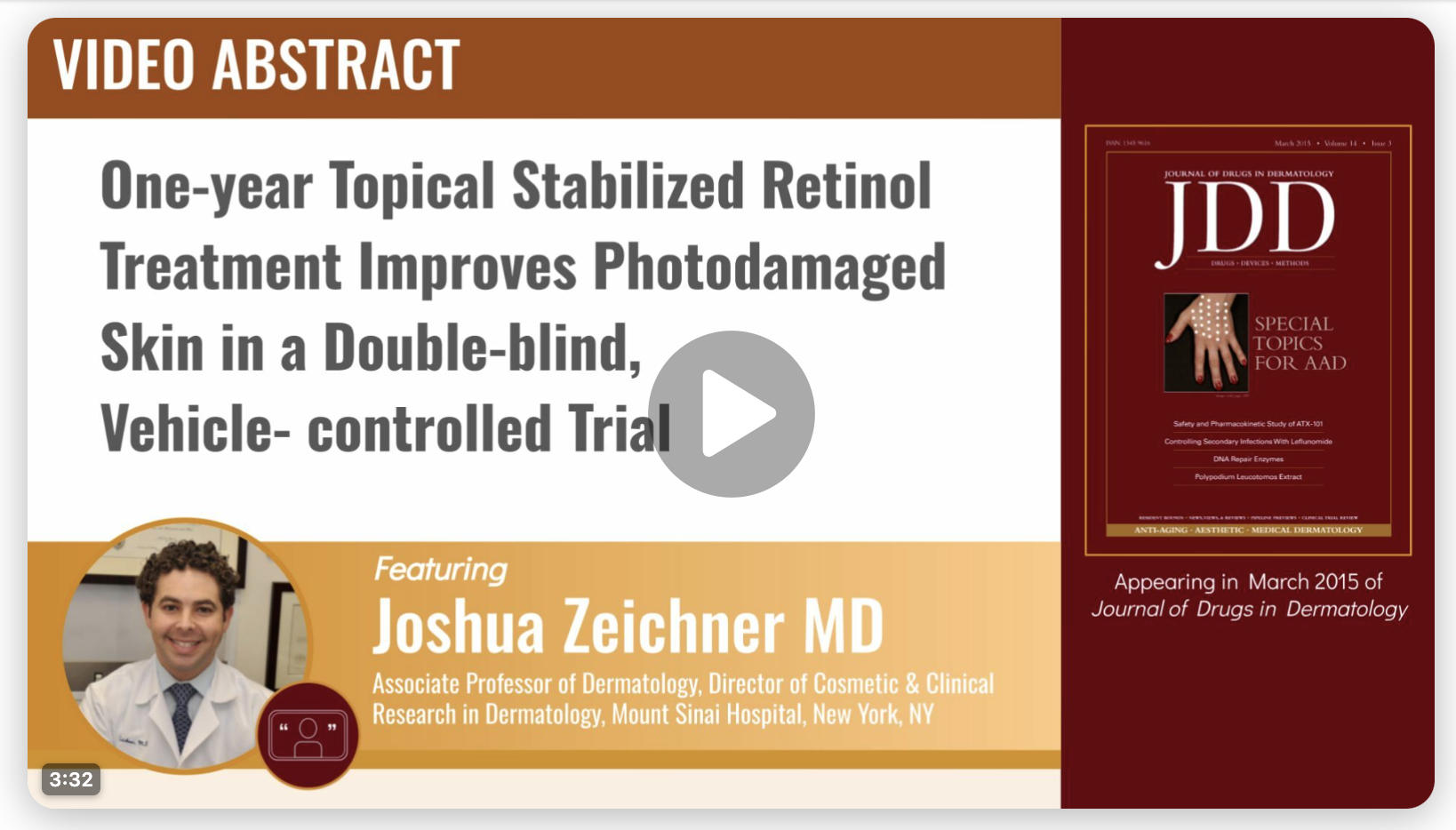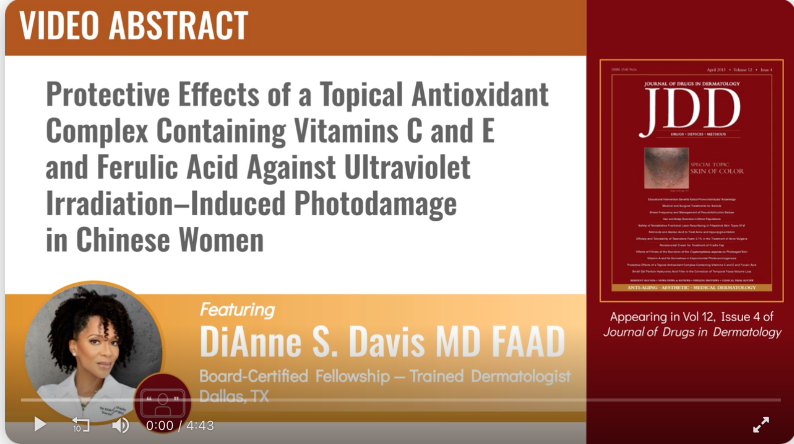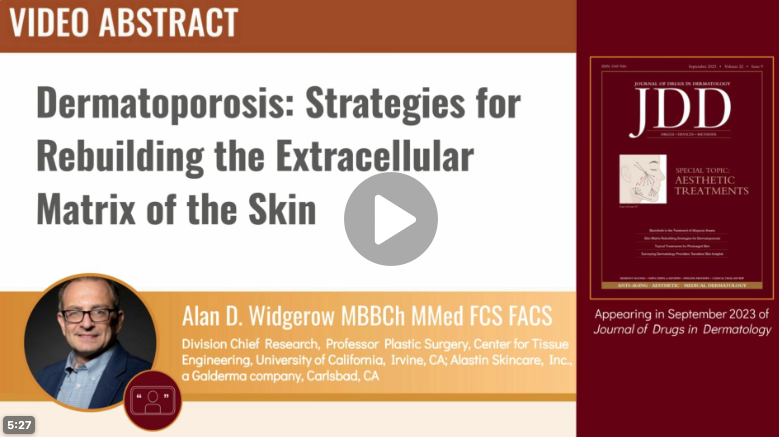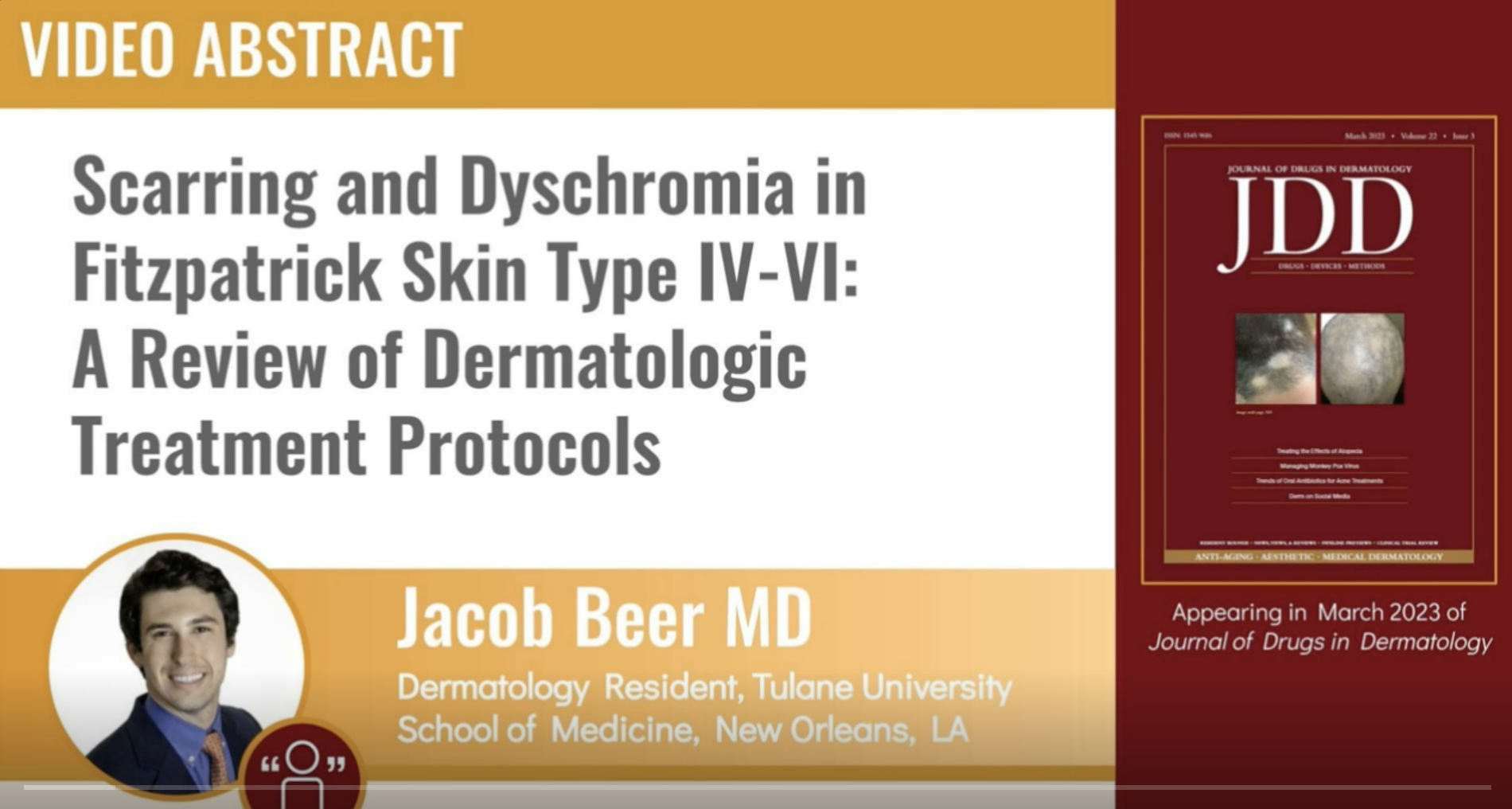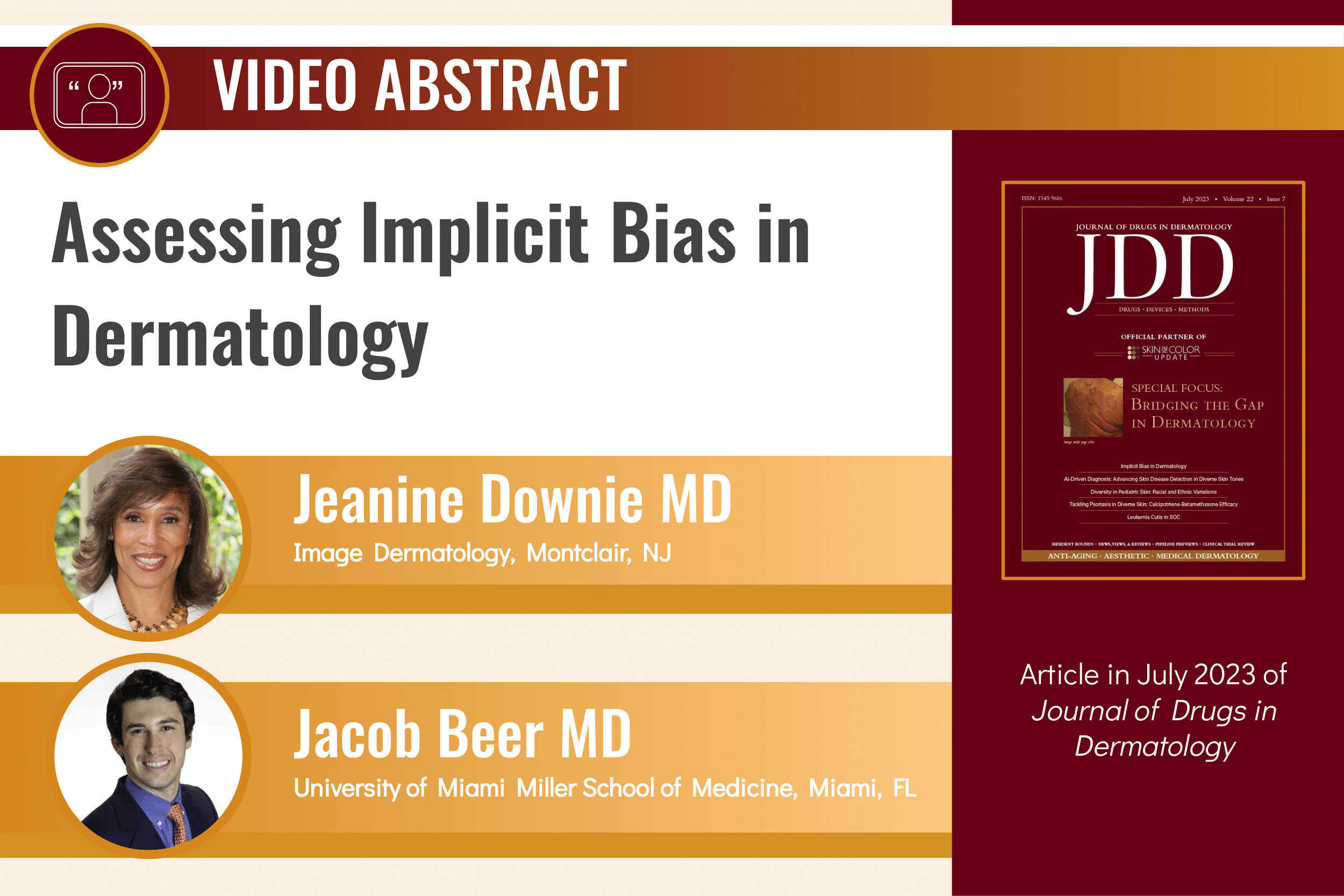Introducing an Exciting NEW Opportunity for Our Authors to Connect with Our Readership through a Cutting-Edge Media Channel! Email us at editorial@jddonline.com to get started!
JDD Video Abstracts
Video Abstracts
NEW VIDEO ABSTRACT!
A Practical Algorithm Integrating Skin Care With Nonenergy and Injectable Dermatologic Procedures to Improve Patient Outcomes and Satisfaction
The most rapidly increasing medical aesthetic procedures for facial antiaging comprise nonenergy and injectable treatments. Currently, standards for skin care before, during, and after nonenergy and injectable treatments are lacking. The algorithm on supportive skin care for facial antiaging nonenergy and injectable treatments aims to stimulate healing, reduce downtime, and improve comfort and treatment outcomes.
NEW VIDEO ABSTRACT!
Efficacy and Tolerability of Topical 0.1% Stabilized Bioactive Retinol for Photoaging: A Vehicle-Controlled Integrated Analysis
Chronic exposure to ultraviolet light photoages skin. Retinol, a precursor molecule to retinoic acid that causes less irritation, is available as a nonprescription, cosmetic retinoid and improves collagen production, skin elasticity, and signs of photoaging. Advances in formulation science have allowed the production of stabilized bioactive retinol formulations. This integrated analysis aims to build on previous studies and further examine the comprehensive efficacy and tolerability of topical 0.1% stabilized bioactive retinol.
NEW VIDEO ABSTRACT!
Prebiotic Skincare Management of Atopic Dermatitis & Xerosis in Diverse Ethnically Patients
Atopic Dermatitis (AD) is a chronic relapsing inflammatory skin disease associated with a significant patient burden on quality-of-life. Rising evidence demonstrate skin microbiome playing an essential role in AD pathogenesis. A decrease in skin microbial diversity, particularly an overabundance of Staphylococcus aureus colonization, is observed on AD lesional skin, plus is associated with disease severity.
New Insights Into Systemic Drivers of Inflammation and Their Contributions to the Pathophysiology of Acne
Acne vulgaris (AV) is a prominent skin disease commonly affecting teenagers. It often persists into adulthood and is associated with adverse physical and psychosocial impacts.
A Randomized Controlled Clinical Study to Evaluate the Effectiveness of an Active Moisturizing Lotion With Colloidal Oatmeal Skin Protectant Versus Its Vehicle for the Relief of Xerosis
Xerosis is a common skin condition, occurring most often in the winter and in low relative humidity, which results in loss of moisture, cracking, and desquamation. Many emollient creams and lotions are available for use as preventive moisturizers.
A Topical Combination Regimen of Benzoyl Peroxide and Retinol Moisturizer for Mild to Moderate Acne
Topical therapies, in many cases over-the-counter (OTC) formulations, are available for the treatment of acne, including benzoyl peroxide (BPO), salicylic acid, and retinoids. While these agents provide therapeutic efficacy, combination regimens can offer improved outcomes due to their ability to address multiple pathways involved in acne formation, making them better suited to address the multiple factors involved in acne pathogenesis and the breadth of complexion issues associated with the condition.
Revisiting the Anchor Flap for Nasal Defects: How It Fits in the Current Reconstruction Paradigm
The anchor or Peng flap, first described in 1987, has not been comprehensively discussed in the literature since 2008. The anchor flap is worth revisiting as a useful advancement-rotation flap for medium-sized defects of the distal nose.
The Interventions to Minimize Pain During Photodynamic Therapy With 5-Aminolevulinic Acid for the Treatment of Cutaneous Diseases
Photosensitization with 5-aminolevulinic acid (ALA) combined with photodynamic therapy (PDT) is approved in the United States for the treatment of actinic keratosis (AK) and is used off-label for other indications including acne treatment and photo rejuvenation.
One-year Topical Stabilized Retinol Treatment Improves Photodamaged Skin in a Double-blind, Vehicle-controlled Trial
BACKGROUND: Retinol, a precursor of retinoic acid, has great potentials as a topical anti-aging molecule; however, only a handful of clinical investigations have been published to date.
Protective Effects of a Topical Antioxidant Complex Containing Vitamins C and E and Ferulic Acid Against Ultraviolet Irradiation-Induced Photodamage in Chinese Women
It is well-known that continuous exposure to ultraviolet irradiation (UVR) leads to various of biological effects, including cutaneous erythema, edema, sunburn, immunosuppression, photoaging, as well as skin carcinogenesis.
Effect of a Tranexamic Acid, Kojic Acid, and Niacinamide Containing Serum on Facial Dyschromia: A Clinical Evaluation
The etiology of skin dyschromia remains complex and its treatment remains challenging, particularly for melasma. Melasma is a common, persistent disorder of hyperpigmentation affecting a significant portion of the population, particularly women living in areas with intense ultraviolet radiation.
Dermatoporosis: Strategies for Rebuilding the Extracellular Matrix of the Skin
Dermatoporosis as a disease entity is relatively newly described, the title conceived as recently as 2007. The background of chronic skin fragility, bruising, and atrophy appears to start in some patients as early as their mid-forties, but is full blown over the age of 65 years.
Scarring and Dyschromias in Fitzpatrick Skin Type IV-VI: A Review of Dermatologic Treatment Protocols
Managing chronic conditions is an essential aspect of dermatologic care, especially regarding the resolution of inflammatory dermatologic disease and recovery of skin lesions.
Assessing Implicit Bias in Dermatology
Patients with skin of color (SOC), defined as Fitzpatrick skin types IV to VI, and of varying ethnicities are under-represented in dermatology. This includes practitioners, trainees, dermatologic teaching materials, and clinical studies.

